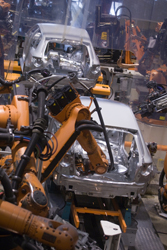Smart factories
The assembly lines of automotive, aerospace, pharmaceutical and medical industries are associated with high labour costs. These sectors need automated systems that can handle large volumes and be installed and reconfigured in record times and at minimal expense. A novel approach to such assembly systems has been devised as part of the EU-funded 'Fast ramp-up and adaptive manufacturing environment’ (FRAME) project. It is based on self awareness, self learning and self adaptation, and is made possible through innovative sensory networks and human–machine interactions. A major benefit of this system is a reduction in ramp-up times, or the time it takes to increase manufacture ahead of expected market demands. Because the machines are able to identify, learn from and correct errors automatically, production and reconfiguration are much more efficient. In addition, it reduces down-time and time spent on maintenance. A behavioural model system also allows operators to test scenarios before making real changes to process units. Engineers are then able to track any important adjustments with the aid of various 'smart tools'. In order to demonstrate the value of the system, it was implemented in the assembly lines of automotive, medical and aerospace industries. End users reported that the FRAME system captures the logic behind decision making and, at a certain point, starts to suggest solutions. By reducing ramp-up times, down-times and system reconfiguration times, FRAME increases productivity and yield while decreasing costs, maintenance needs and human error.







